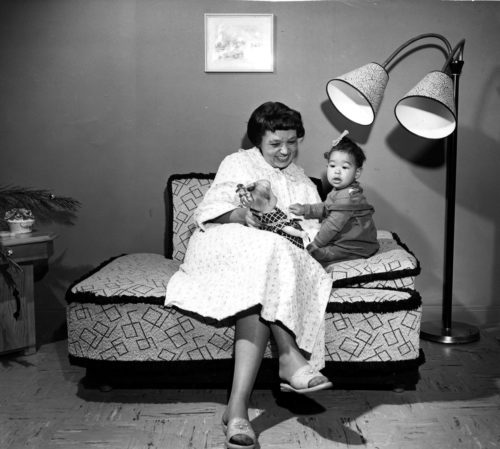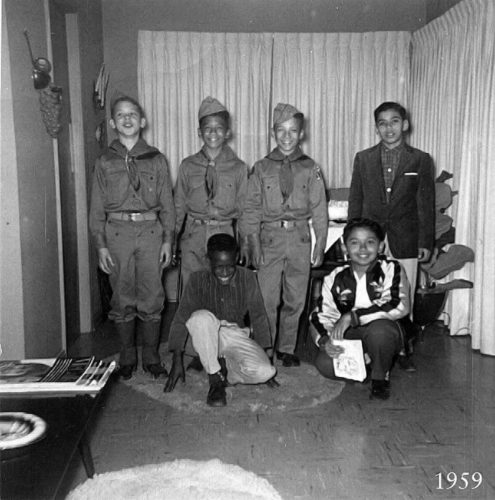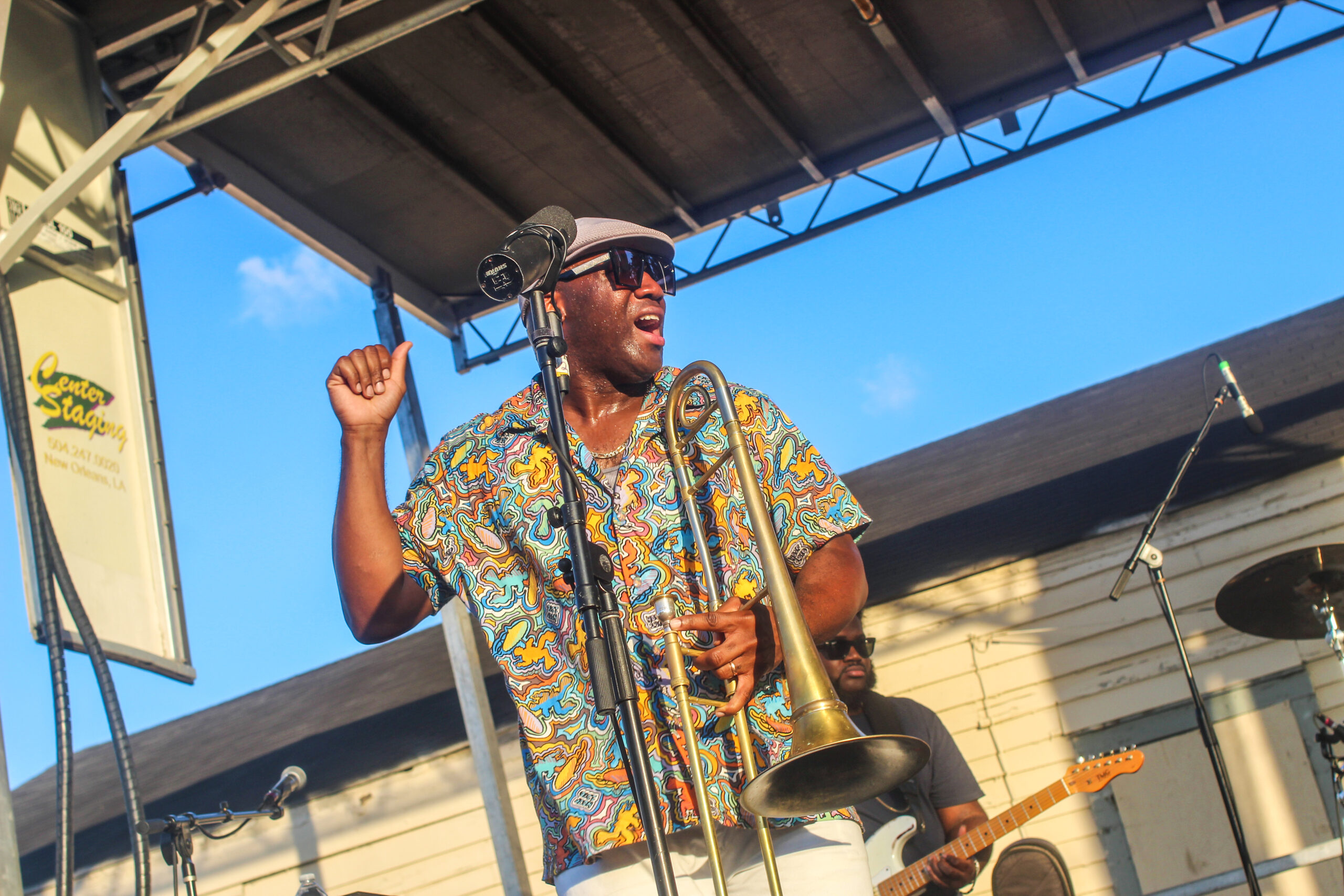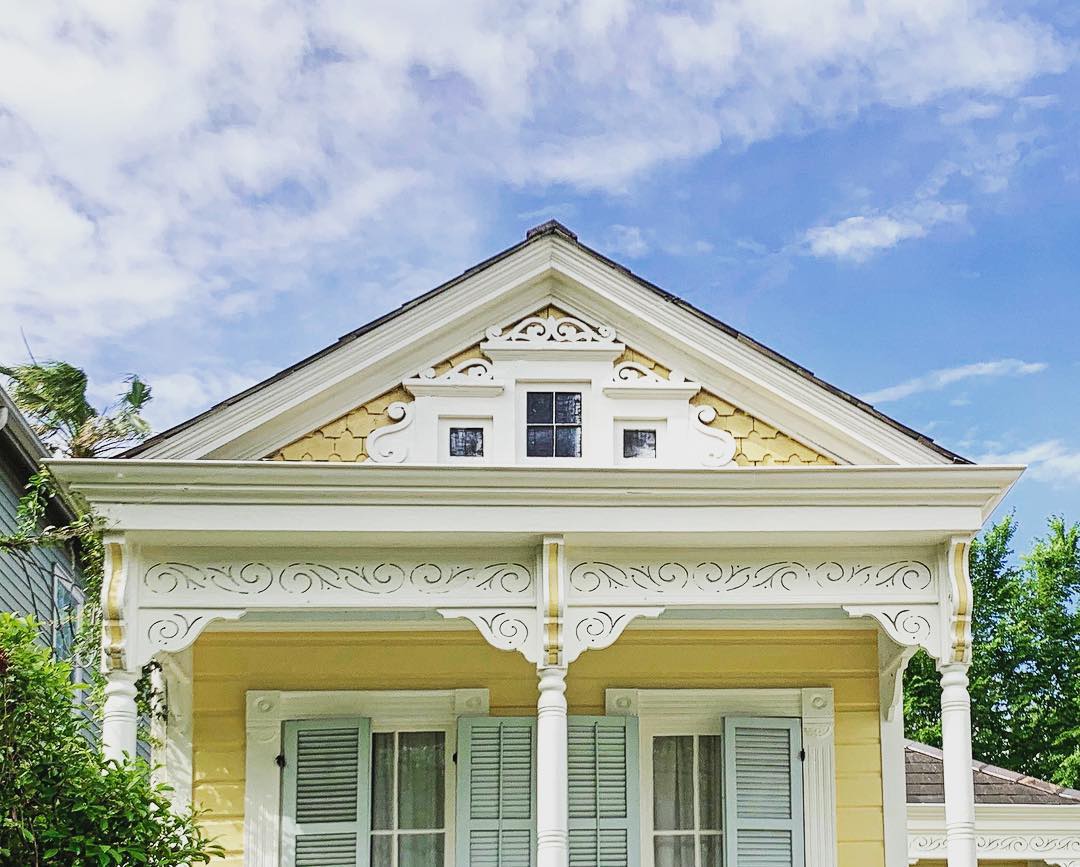Visit the thoughtful renovation of a Pontchartrain Park home while enjoying happy hour drinks at Beams & Brews presented by Inhab goes to Pontchartrain Park on July 25. Did you or someone you know grow up in Pontchartrain Park? We’ll be collecting stories, photographs and memories for the Neighborhood Memory Project.
This story appeared in the June issue of the PRC’s Preservation in Print magazine. Become a member of the PRC for a subscription!
In 1955, I was eight years old. I was quite content living at 1825 North Miro St. in our 7th Ward neighborhood. We were nestled between London Avenue (now A.P. Tureaud Avenue) and New Orleans Street. The neighborhood belonged to me and my friends: Narcisse Marchand lived across the street; Ronald and Israel Parent lived around the corner on New Orleans Street, as did Joe Jones; my best friends, the Cuiellettes, lived one house over; and Patricia Auzout (the love of my eight-year-old life) lived next door.
Then, out of the blue, came the announcement from my parents that we were moving to 6336 DeBore Drive. Pontchartrain Park was one of the first middle-class subdivisions built for black Americans in the nation. It was built behind a white community called Gentilly Woods. The two were separated by a large ditch. Jim Crow segregation was still the law of the land in most of the nation and definitely in the South. The construction of Pontchartrain Park didn’t end the oppression of segregation, but it did offer something of an escape for black families at the time. It provided a relatively safe environment to raise their families.
When The Park first opened, we couldn’t drive through Gentilly Woods (called the white section); instead we had to drive down France Road to Hayne Boulevard to enter the subdivision. In those days, France Road would be littered with dead snakes that had been run over by cars. My mother hated the snakes. Eventually, Congress Drive was built over the schismatic ditch, allowing Park residents easier access to Chef Menteur Highway. Subsequently, the Congress bus line was established.
Advertisement
One of my earliest memories of Pontchartrain Park was my father planting a lawn. We had grass on Miro Street but not a lawn. We had moved into the first section of houses that had been built in The Park. I wasn’t so enamored with our new home at first since I had no friends nearby. However, my folks seemed happy. My mother had ordered new living room furniture from Kirschman’s and a dining room set. My sister was born in 1955 so it was a busy household, with my parents ordering telephone service and setting up the new phone in the niche in the hall, and getting the beds and furniture arranged. We had a three-bedroom ranch with one of the bedrooms used as a TV room.
My father would later double the size of the house by adding a den. He was a carpenter and, as was typical of many families moving into the subdivision, was always improving the house. There were many tradesmen in the neighborhood, and he knew most of them. In those days, they all helped one another.
When my dad built the addition to the house, he called on his friends to help; Mr. Williams was a concrete guy, Mr. Robert was a tile man, Mr. Floyd was another carpenter, and so on. It was very much a barter system. These men would help for little or no charge because they knew my father would be there to help them with their projects. My mother would feed them, and the work would go on until the project was completed. This was the way black families improved their style of living.
1: Edna Khaton plays with baby Sabrina on the family’s new furniture.
2: Each day was an adventure for the children of Pontchartrain Park. Pictured, standing, from left, are the author, Lionel Khaton, with Robert Cuiellette, George Cuiellette and Bruce Kirkland. Front row, from left, are Edwin Jones Jr. and Peter Robinson.
My dad had landed a job in the Post Office and joined the ranks of the many Postal workers living in The Park. This work along with teaching and some white collar positions comprised the economic background of the community.
It wasn’t long before things got better for me when the Cuiellettes moved into The Park. So began the wonder years of life in Pontchartrain Park. The seasons brought different activities. Fall meant the beginning of football. All the kids would gather in an area we called the little park. We’d pick our teams and play ball. We’d play baseball in the spring.
A few years later, organized little league would be offered at Wesley Barrow Stadium. The little park also had a basketball goal, which was used year round. Sometimes we would get pieces of lunch meat from our refrigerators and bring crawfish nets down to Hayne Boulevard to crawfish in the narrow ditch that ran along the street.
Beams & Brews presented by Inhab goes to Pontchartrain Park
July 25, 2019 • 5:30–7pm • 5614 Press Drive
Visit the thoughtful renovation of a Pontchartrain Park home by Randall Duplessis and Brittney Jordan – both of whose families were among the original residents of this historic neighborhood in the 1950s. If you grew up in the neighborhood, share your stories, photographs & memories with us for the Neighborhood Memory Project. Learn more & RSVP.
The Park was incomplete in those days so the area around Press Drive was still being built, including that part of the golf course. In fact, many of the lagoons were being dug.
Jax Brewery sponsored the Golden Gill contest for a while. The gills of fish in the lagoons were tagged, and each tag had a dollar amount engraved on it. We would fish in the lagoons in hopes to be lucky enough to catch a tagged fish and win five or 10 bucks. I forget how big the largest prize was in the contest.
We also rode our bikes along the paths the dump trucks made while building the golf course. Reeds and small trees were still growing in that area, and we would ride as fast as we could to avoid nutria and alligators, which we never saw. We called that path Hurricane Alley.
Once we were in our early teens, our parents allowed us to venture on our own to Lincoln Beach. We usually walked on the railroad tracks across the Seabrook Bridge to catch the Hayne Boulevard bus to Lincoln Beach. We usually made a day of the beach, first swimming and then riding the bumper cars and other attractions along the main promenade.
Each day was an adventure of some sort. We played touch football in the street, jumped rope with the girls, and camped out in backyards. We ran the entire gamut while growing up.
Eventually high school came and then college. The Park had grown. The homes around Press Drive had been built, and Southern University had its first building. The world was getting larger. Pontchartrain Park had matured, and we had grown up with it.
As previously stated, The Park didn’t end the racial tension that plagued the country. What it did offer its residents was a sense of community. It provided a base for people who shared common attitudes and values.
Advertisements











